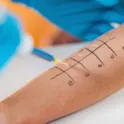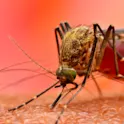
Featured news
18 Jul 2023
Smiles all round: clinical trial shows that a toothpaste containing synthetic tooth minerals can prevent cavities as effectively as fluoride
by Angharad Brewer Gillham, Frontiers science writer Image/Shutterstock.com Scientists studying alternatives to fluoride toothpastes tested out hydroxyapatite toothpaste, which is already known to help people who are at particular risk for cavities or have trouble with dental sensitivity and periodontitis, but which hasn’t been trialed in adults with healthy teeth. Patients used either a hydroxyapatite toothpaste or a fluoride toothpaste for 18 months. At the end of this period, the patients using hydroxyapatite toothpaste were no more likely to develop cavities than the patients using fluoride. Brushing twice a day keeps the dentist away – but can we improve on the toothpaste we use to maintain clean teeth, preventing medical issues that spiral from poor dental health? Most toothpastes use fluoride, a powerful tool for oral hygiene. However, fluoride can pose health problems in some cases, especially for children who consume too much fluoride by swallowing most of their toothpaste: children normally use only a tiny dose of toothpaste to avoid these problems, but that reduces toothbrushing efficacy. In the search for alternatives, a team of international scientists and Polish clinicians have identified a hydroxyapatite toothpaste that works just as well as fluoride toothpaste to protect against cavities. “Hydroxyapatite is […]













